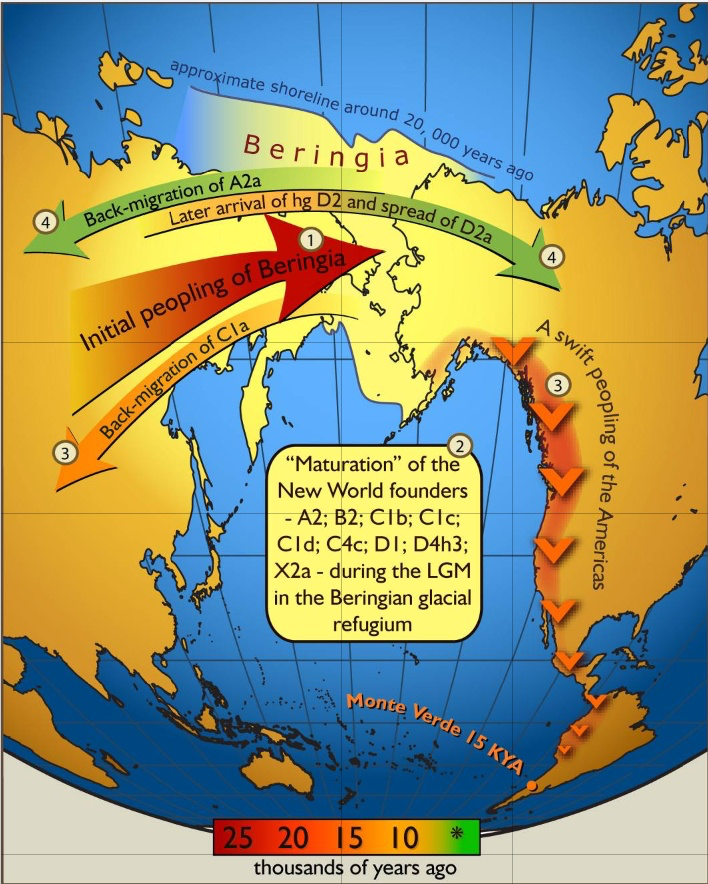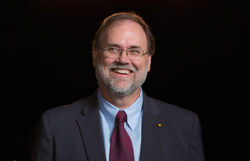Professor studies whether Americans were descendants of original modern humans

LAWRENCE — New analyses indicate that early migrants to the Western Hemisphere were descendants of the modern humans who originated in Africa and were part of the global dispersal of modern humans around the world, according to an analysis that includes a University of Kansas anthropological geneticist.
 "We have always assumed that the initial peopling of the Western Hemisphere was a single, unique and independent event," said Dennis O'Rourke, a KU Distinguished Foundation Professor in Anthropology. "By seeing it as part of a larger global process, everything we learn about other dispersals into geographic areas out of Africa within the last 50,000 years or so are relevant to our understanding of the American case."
"We have always assumed that the initial peopling of the Western Hemisphere was a single, unique and independent event," said Dennis O'Rourke, a KU Distinguished Foundation Professor in Anthropology. "By seeing it as part of a larger global process, everything we learn about other dispersals into geographic areas out of Africa within the last 50,000 years or so are relevant to our understanding of the American case."
O'Rourke is a co-author of the article "Beringia and the Global Dispersal of Modern Humans," published in the April issue of the journal Evolutionary Anthropology. The authors examined recent developments in anthropological genetics, archaeology and paleoecology and how these findings inform us about the original migration to the Americas, as well as the human occupation of the former land bridge between Alaska and Siberia, known as "Beringia."
Until recently, settlement of the Americas seemed to be largely separate from the out-of-Africa dispersal of modern humans that began at least 50,000 years ago. The earliest Americans were thought to descend from a small subset of Eurasians that migrated to the Western Hemisphere less than 15,000 years ago, O'Rourke said.
However, archaeological discoveries since 2000 have shown that Homo sapiens occupied Beringia prior to 30,000 years ago and during what is known as the Last Glacial Maximum, or LGM, he said, which is the last period in Earth's climate history when ice sheets were at their greatest extension.
"Linking the process of peopling near the time of the LGM brings the idea of 'refugia,' which we see for populations elsewhere at this time, into sharper focus as a possible mechanism for source populations in the Americas and the role that may play in structuring the genetic variation we see early in the record," O'Rourke said.
A 2007 model, known as the "Beringian Standstill Hypothesis," is based on analysis of mitochondrial DNA in samples taken from living Native American and Siberian people. The model suggests the isolated occupants of Beringia migrated at the end of the LGM to avoid inundation of the region as sea levels started to rise.
O'Rourke said the article points out many questions remain unanswered about the complicated movement of people and their genes into and out of Beringia. He said it would be key for researchers in the future to seek to obtain high-quality ancient DNA data from northeast Siberia from 15,000 to 30,000 years ago.
"Augmenting the paleoecological record across the Bering Sea basin, and expanding the archaeological record around the western and southwestern coasts of Alaska, would be quite useful," he said.
O'Rourke; Jennifer Raff, KU assistant professor of anthropology, and, postdoctoral researcher Justin Tackney were part of one such recent study. They co-authored a 2015 PNAS study that examined DNA of an infant and preterm fetus buried together in Central Alaska roughly 11,500 years ago. The analysis provided a clearer picture of the genetic diversity likely present in early Beringian populations.
In addition to DNA samples and new archaeological data, simulations and modeling of alternative demographic scenarios for how early migrants entered the Western hemisphere would also be helpful in testing alternative hypotheses to the standstill model, O'Rourke said.
As a KU alumnus, O'Rourke returned to the university in January from the University of Utah. He is considered one of the foremost experts in the United States for the use of ancient DNA to reconstruct human settlement to the Americas.
He is overseeing creation of a new state-of-the-art ancient DNA facility that will permit KU researchers to continue examining questions about ancient migrations in a variety of ways.
"Not only will we be able to analyze ancient human DNA as samples become available for study, but we are already using proxy organisms — from human prey species to human pathogens — to gain broader insights into the nature of human movement, behavior and adaptations in these early populations," O'Rourke said.
He said the KU research team believes the design of the new lab will afford the opportunity for higher throughput and allow more rapid progress in investigating patterns of genetic variation of the past.